-
 1032 Hits
1032 Hits
-
 79.78% Score
79.78% Score
-
 11 Votes
11 Votes
|
|
Mountain/Rock |
|---|---|
|
|
39.72202°N / 21.61727°E |
|
|
Trad Climbing |
|
|
Spring, Fall |
|
|
1476 ft / 450 m |
|
|
Overview
Kelch / Psaropetra
Kelch is one of the best rock climbing destination in the Meteora (Μετέωρα) area, a charming and suggestive climbing site located in the Thessaly region of Greece. It's a mighty and attractive tower located in the Meteora Western Group and it's one of the most characteristic rocks of this sector. In fact Kelch has an unmistakable appearance with its characteristic huge boulder "balancing" on the top, creating a big gap/chimney with the lower summit. This gap is the point of the most famous bridging of Meteora. Almost everybody manages it on aid, because it needs to be tall and strong to make it all free.
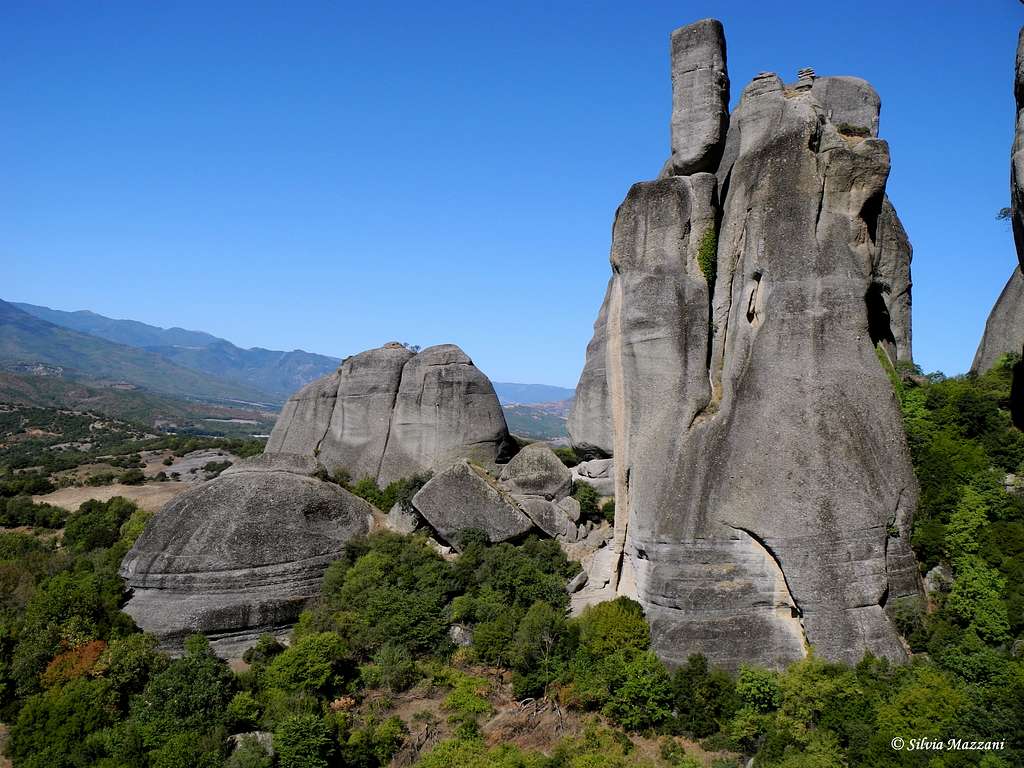
Kelch/Psaropetra means something like "Cup" in English and is called "Diskopotiro" in Greek, which means the same think. It is well known that the developement of Meteora was done mainly by East Germany climbers. The 2 guidebooks that include the most of the routes (except some new ones) were created by D. Hasse and H.L. Stutte, mainly in German language, with some Greek and English also. So all the rock formation in Meteora have two names, the original Greek one plus the German one created by the first climbers. In recent times the English name which is the translation of the first two names and is more convenient for the climbers who doesn't speak German or Greek is frequently used. Anyway it does not respect the original nomenclature, so it is better to keep some names as they appear in the guidebooks, rather than translate them in English. I think it's easier for somebody who wants to visit the place.
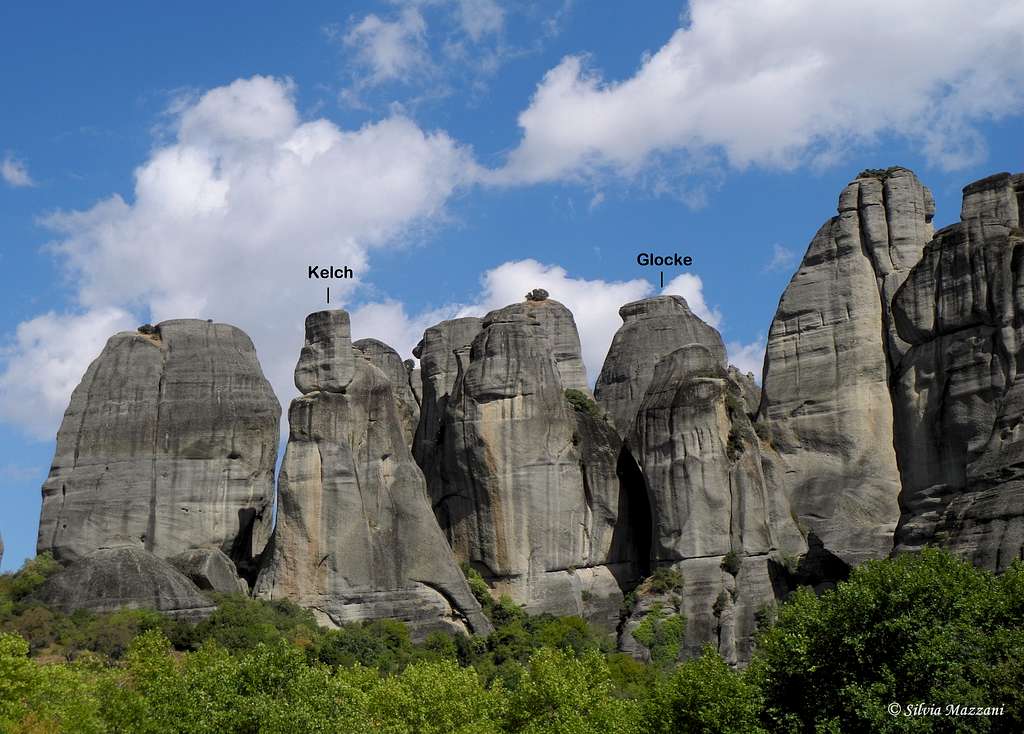
The most famous climb on Kelch is Eiertanz, meaning "Dance of eggs" in English and was climbed first by Heinz Lothar Stutte and Otto Scheda in 15.4.1982. That's for the 4 first pitches. The last pitch is part of Nordweg (North Route), which first ascent was done by Dietrich Hasse and Sepp Eichinger in 20.8.1975. Nordweg was the first ascent of the Kelch as well.
Getting There
Meteora is situated in the Thessaly region of Greece, Northern half of Greece, approximately 25 km NNW from Trikala, and immediately North of Kalambaka and Kastraki, the two main towns in the area, both located very close to the rocks. The closest main town is Larissa. The distance to Kalambaka is about 360 km from Athens and 237 km. from Thessaloníki.
By plane - Meteora can be approached from Athens Eleftherios Venizelos airport or from Thessaloniki airport. From these airports you can:
- take a domestic flight to Larissa (about 85 km from Kalambaka)
- rent a car, useful once you are in Kastraki, but not essential, then 4 hour drive to Kalambaka on a new highway.
- use public transports (bus or train). Getting to Meteora without a car is easy thanks to the train from Athens that stops in Kalambaka.
By ferry from Italy – If you wish to travel with your own car, there are different shipping companies and many ferries departures to Igoumenitza from the harbours of Ancona, Bari and Brindisi across the Adriatic.Then a mountain road to the small town of Kalambaka at the foot of the wonderful Meteora.

Approach to Kelch
The approach is brief and easy. Once in Kastraki village you can walk from the square to the West Group and the Kelch in about 15 minutes, or you can park your car near the Doupiani Rock, just on the left of the main road leading to the Meteoron monastery along the road. From here head to the Kelch rocks in 5 minutes.
Routes
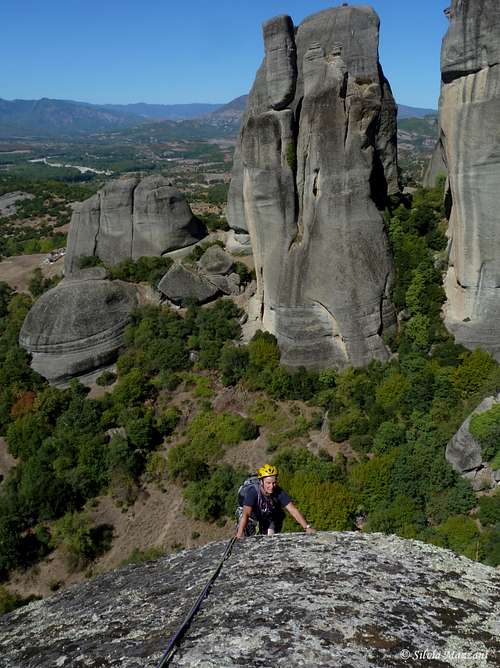
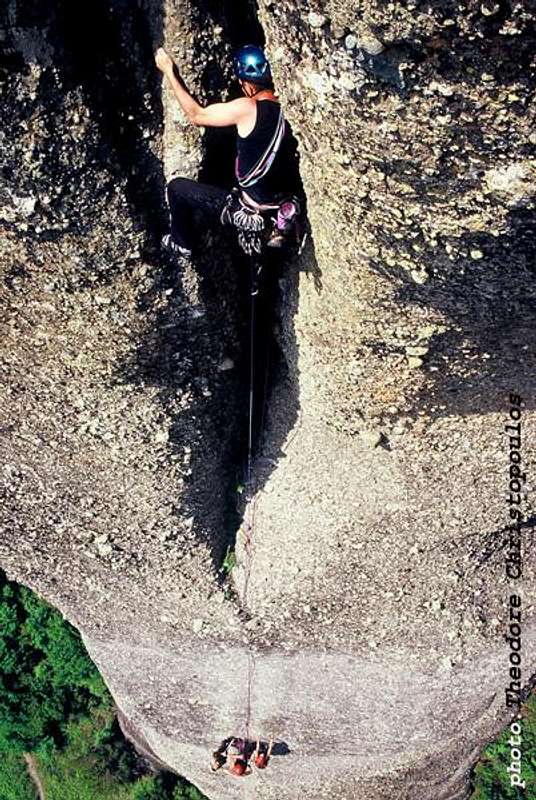
- Eiertanz (Eggs Dance) VI-, A1 or something like VII, 130m, 5 pitches - H.L. Stutte and O. Scheda 1982 - The classic route of the tower.
- Nordweg V, A1 95 m, 3 pitches - D. Hasse and S. Eichinger 1975
- Spiralweg V+, A1 110 m, 4 pitches - L. Yannacoulis 1985
- Kieselmonster VII-, 70 m, 3 pitches - . Eckert, A. Dursch 1994
- Weg der Pinguine VI-, VI, 95 m, 4 pitches - H. Fuchs, R. Petzold 1998
- Dresdner Eierschecke 6a+, 130 m, 4 pitches - A more recent and relatively well bolted route to the right of Eiertanz. L1 5c+ 10 bolts 35m, a slab with a hard start. L2 6a 8 bolts 25m, lots of big cobbles ending with a bulge L3 6a+ 14 bolts 40m, a steeper well protected pitch. L4 6a+ A1 6 bolts, an optional aid move across to the poorly protected but relatively easy final pillar.
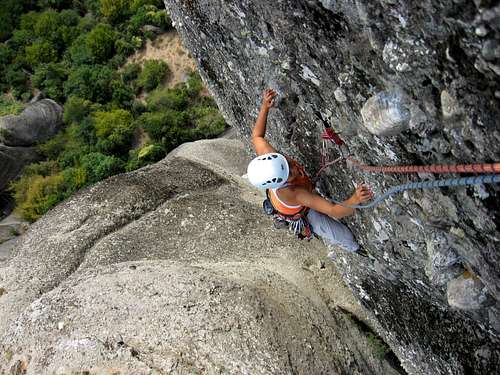
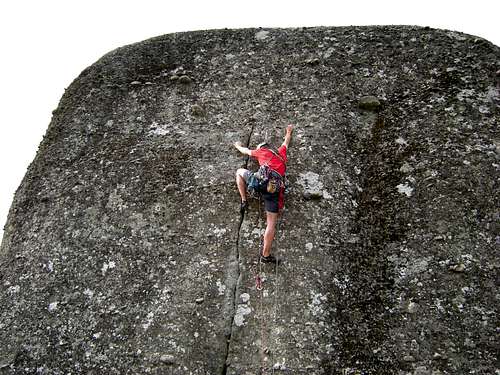
Red Tape
No fees and no permits required. Anyhow, if you are visiting this area, remember not to climb on rock formations with inhabited monasteries. In the Seventies Dietrich Hasse and his team decided, in agreement with local authorities, not to climb any route on these latter rock formations. This rule applies even today. Please preserve all other historical remains. Another important suggestion is not to add fixed protections on the classic routes to the pre-existing ones. If you plan to visit the monasteries, keep in mind to be appropriately dressed: men cannot wear shorts, while women must wear long skirts and not trousers, arms must be covered. Since the year 1988 Meteora was declared a Meteora Unesco World Heritage Site .
When to Climb
Spring and Autumn are the best seasons for Meteora. Avoid Summer, especially really hot days. Eiertanz is a good choice for winter mornings, in fact it's East facing in general, but the last pitch looks North. The route has sun until noon (more or less, depending on the season).
Accomodation
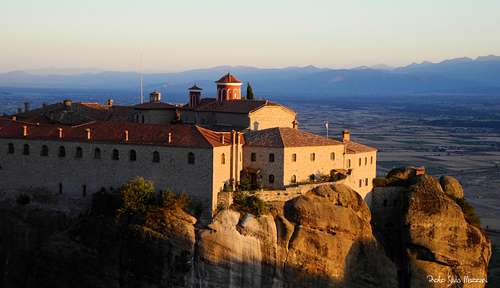
There is a great number of hotel rooms, B&Bs and rooms to rent in the village of Kastraki, the village built in the shadow of the Meteora towers. The nearby town of Kalabaka also features many accomodation choices. There are also three organized campsites, amongst which the nearest one to the crags is Camping Vrachos in Kastraki. There is also a smaller campsite near the tower of Doupiani. There are plenty of eating out options, particularly tasty traditional Greek food and pizzerias, both in Kastraki and Kalambaka.
Meteo
Guidebooks

“Meteora – Climbing and hiking” by Dietrich Hasse and Heinz Lothar Stutte - I edition 1986, in English and German. It contains around 230 routes. Also, it provides general information about mountaineering, hiking in Meteora, maps, directions.
The second guidebook is:

“Meteora Climbing Part II” by the same Heinz Lothar Stutte and Dietrich Hasse – II edition 2000 – German, Greek and English - Note: the II edition is not a complete guidebook, but an update to the I edition
The Meteora guidebooks can be purchased in Kastraki, Taverna Paradisos or Camping Vrachos. There is also a useful map by the same authors that can be purchased in local shops in Kastraki.

A new guidebook was recently published (2022) by the local climber Vangelis Bastios
Meteora – Sport Climbing Guide by Vangelis Bastios, Edition 2022 - The guidebook includes routes from Meteora, Theopetra, Sarakina and Agia Paraskevi.
Says Vangelis: “Because sport climbing has become increasingly popular in recent years, it helped me decide to create a guidebook for just the sport routes in Meteora and Theopetra (a cliff only 10 km outside Meteora, with good quality limestone).
Map
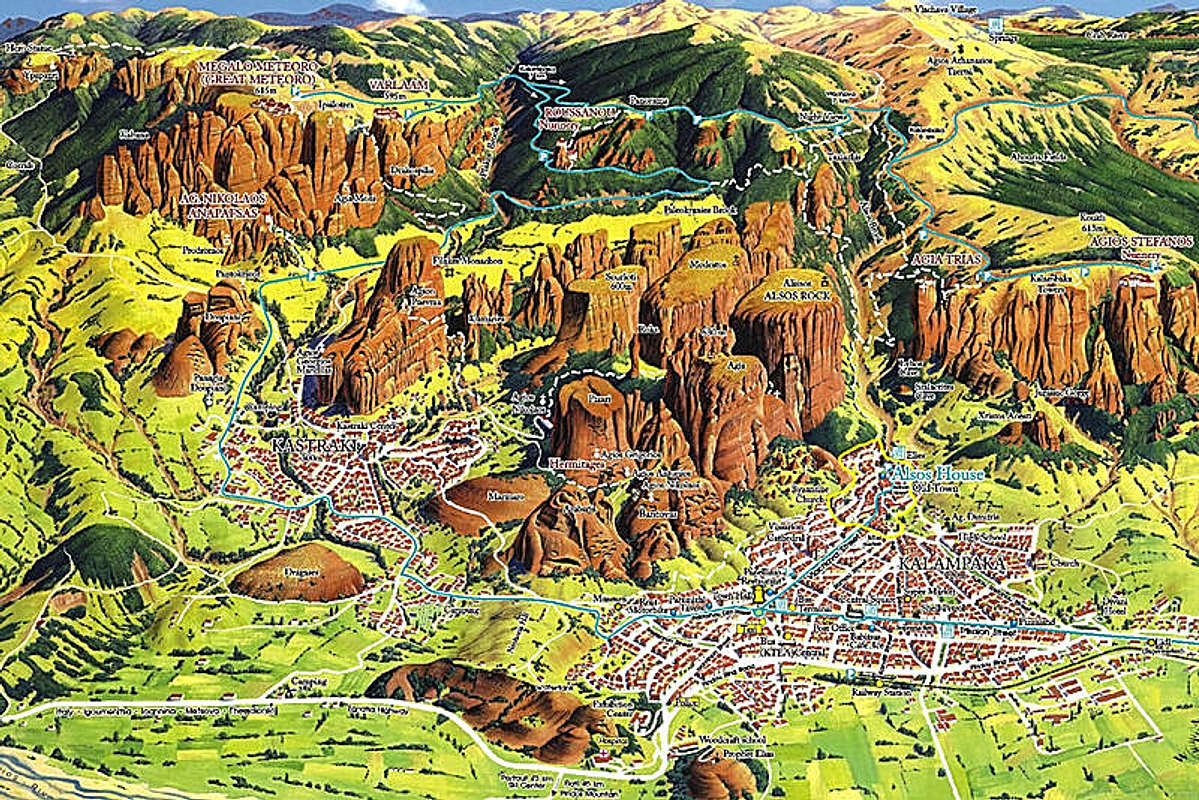
External links
Climbing web-sites:
- Climbgreece
- Climb-Europe Greece/Meteora
- Meteora-rock-climbing
The site of Jörg Brutscher, one of the German climbers, who first climbed many hard cracks in Meteora. Unfortunatelly his site is only in german.
Also by Jörg Brutscher, check : www.sandsteinklettern.de. In german only, but with a lot of information. Click on Wegedatenbank, then Griechenland. There are a lot of routes and very good drawings/maps of the various rock groups. Some very interesting climbing photos from Meteora, Elb and other places.
The site www.routes.gr is the best database of mountain climbing routes in Greece. Unfortunatelly has only a few, mainly new, routes from Meteora in this link: www.routes.gr/?Lang=en&Page=Climbing/Trad/Areas/Meteora
Other info here:
The site of Kalambaka town: www.kalampaka.com
The site of the Hellenic Mountain Guide Association.

